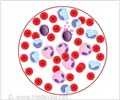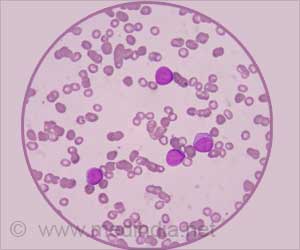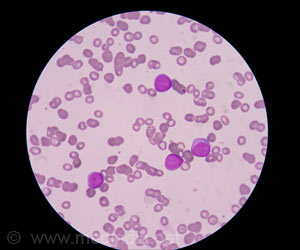- The t(8;21) rearrangement with RUNX1-RUNX1T1 and t(5;17) translocation involving NPM-RARA are distinct chromosomal abnormalities found in acute myeloid leukemia (AML)
- This study presents a rare case of a patient with AML exhibiting both t(8;21) and t(5;17) translocations, shedding light on the complexity and heterogeneity of the disease
- Understanding the genetic profiles and implications of these translocations in AML is crucial for personalized treatment strategies and advancing our knowledge of the disease
A novel t (5; 17) (q35; q21) associated with t (8; 21) (q22; q22) in a patient with acute myeloid leukemia: case report and review of literature
Go to source)."
Understanding Chromosomal Abnormalities in Acute Myeloid Leukemia
One of the most prevalent chromosomal abnormalities in acute myeloid leukemia (AML) is the t (8; 21) (q22; q22) rearrangement with the consequent RUNX1- RUNX1T1 rearrangement. It is linked to a positive prognosis. The t (5; 17) (q35; q21) translocation is a rare translocation that connects the nucleophosmin (NPM) gene to the retinoic acid receptor (RARA) gene and was first identified in an acute promyelocytic leukemia (APL) variation. The paper describes the clinical and laboratory findings of a 19-year-old male patient diagnosed with AML. The leukemic cells exhibited morphological and immunophenotypic characteristics consistent with AML. The patient underwent initial remission induction therapy with cytarabine and anthracycline, followed by allogeneic stem cell transplantation.Unveiling a Unique Genetic Profile in Acute Myeloid Leukemia
The researchers shed light on the exceptional nature of this case, as it marks the first reported instance of simultaneous t(8;21) and t(5;17) translocation in AML. The presence of these specific chromosomal rearrangements presents a distinctive genetic profile that contributes to the complexity and heterogeneity of AML.Clinical Implications and Future Directions for Acute Myeloid Leukemia
Understanding the impact of concurrent t(8;21) and t(5;17) translocations on AML pathogenesis and treatment response is vital for advancing personalized therapies. This case underscores the importance of comprehensive genetic profiling and highlights the need for further research to elucidate the underlying mechanisms driving these unique genetic combinations.Understanding the specific chromosomal abnormalities present in AML subtypes allows for more precise risk stratification and treatment planning. Genetic testing and analysis play a crucial role in identifying these abnormalities and tailoring therapy accordingly. With advancements in molecular techniques, such as fluorescence in situ hybridization (FISH) and polymerase chain reaction (PCR), detecting these chromosomal rearrangements has become more accessible and routine in clinical practice.
While these specific chromosomal abnormalities are associated with distinct AML subtypes and can guide treatment decisions, it's important to note that AML is a complex disease with multiple genetic and molecular alterations. Comprehensive genomic profiling is often necessary to identify additional mutations and inform personalized treatment strategies.
Reference:
- A novel t (5; 17) (q35; q21) associated with t (8; 21) (q22; q22) in a patient with acute myeloid leukemia: case report and review of literature - (https://www.genesandcancer.com/article/232/text/)











